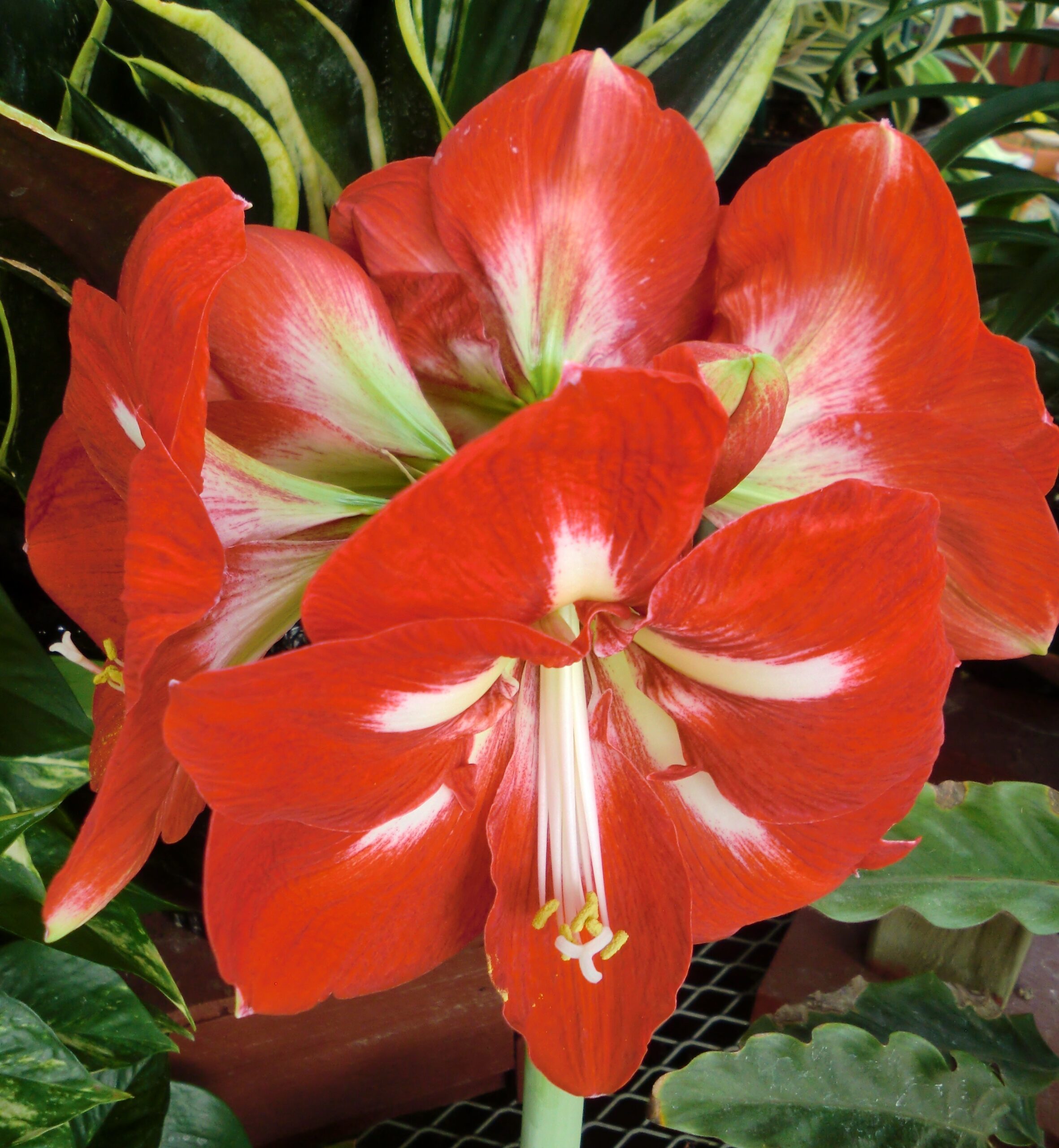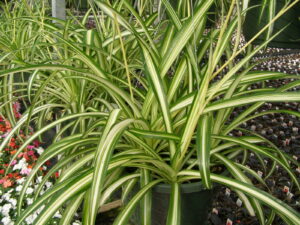The Amaryllis plant, with its vibrant and show-stopping blooms, has captured the hearts of gardeners and flower enthusiasts around the world. Known for its stunning flowers and ease of cultivation, the Amaryllis is a popular choice for both indoor and outdoor gardening. In this comprehensive guide, we will explore the captivating qualities of the Amaryllis plant, from its history and varieties to its care and propagation. Whether you are a seasoned gardener or a beginner, this article will provide valuable insights and inspiration to help you cultivate and enjoy the beauty of the Amaryllis plant.
1. History and Origin
The Amaryllis plant, also known by its scientific name Hippeastrum, is native to South America, specifically the tropical regions of Brazil and Peru. The name “Amaryllis” originates from a Greek word that means “to sparkle,” which perfectly describes the radiant blossoms of this plant.
The first known cultivation of Amaryllis dates back to the 18th century when it was brought to Europe by explorers and botanists. Since then, breeders and enthusiasts have developed numerous cultivars, resulting in a wide range of colors, sizes, and patterns.
2. Varieties and Colors
The Amaryllis plant offers a stunning array of colors and varieties, ensuring that there is a perfect choice for every gardener’s taste. Some popular varieties include:
- Red Lion: This classic variety boasts large, velvety red flowers that make a bold statement in any garden or indoor space.
- Apple Blossom: With its delicate pink and white petals, the Apple Blossom variety exudes elegance and charm.
- Minerva: Featuring vibrant red and white striped petals, the Minerva Amaryllis adds a touch of whimsy and playfulness to any setting.
- Double Dream: True to its name, this variety offers double-layered, ruffled blooms in various shades of pink.
These are just a few examples of the wide range of Amaryllis varieties available. Whether you prefer bold and dramatic colors or soft and delicate hues, there is an Amaryllis variety to suit your preference.
3. Planting and Care
One of the reasons why the Amaryllis is so beloved by gardeners is its ease of cultivation. Here are some key steps to ensure successful planting and care of your Amaryllis:
Choosing the Right Bulb
When purchasing Amaryllis bulbs, it is important to select healthy and high-quality bulbs. Look for bulbs that are firm, plump, and free from blemishes or soft spots. Larger bulbs tend to produce more flowers, so opt for bulbs that are around 8-10 centimeters in diameter.
Planting the Bulb
Before planting your Amaryllis bulb, choose a suitable container with good drainage. Fill the container with well-draining potting soil, leaving about a third of the bulb exposed above the soil surface. Place the bulb in the container and gently press the soil around it, ensuring it is stable and upright.
Watering and Light
Once planted, water the Amaryllis thoroughly and place it in a bright location with indirect sunlight. Avoid placing the plant in direct sunlight, as it can lead to scorching of the leaves. Water the plant regularly, but be careful not to overwater, as this can cause bulb rot.
Temperature and Humidity
The Amaryllis plant thrives in temperatures between 60-75°F (15-24°C). It is important to provide adequate humidity by misting the leaves occasionally, especially in dry indoor environments.
4. Amaryllis as Indoor Decor
One of the greatest advantages of the Amaryllis plant is its suitability as an indoor decorative plant. With its stunning blooms and tall, elegant stems, the Amaryllis adds a touch of sophistication and natural beauty to any interior space.
Place your potted Amaryllis near a window or in a well-lit area, and watch as it transforms your living room, kitchen, or office with its vibrant colors. The Amaryllis can also be a delightful centerpiece for special occasions or a thoughtful gift for loved ones.
5. Propagation and Expansion
For those who wish to expand their Amaryllis collection or share the beauty of this plant with others, propagation is a rewarding and relatively simple process. Here are two common methods of propagating Amaryllis:
Division
When your Amaryllis plant becomes overcrowded and starts producing smaller blooms, it may be time to divide the bulbs. Carefully remove the bulbs from the container and gently separate them, ensuring that each bulb has roots attached. Replant the bulbs in individual containers, following the planting and care guidelines mentioned earlier.
Seeds
Another method of propagation is through seeds. After the Amaryllis blooms and fades, it may produce seed pods. Allow the pods to fully ripen and turn brown before collecting them. Sow the seeds in a well-draining potting mix, keeping them moist and warm. Germination can take several weeks to several months, but with patience, you will be rewarded with new Amaryllis plants.
6. Common Pests and Diseases
While the Amaryllis plant is generally resistant to pests and diseases, it is important to be aware of potential issues and take preventive measures. Here are some common pests and diseases that may affect the Amaryllis:
- Spider mites: These tiny pests can cause yellowing and wilting of the leaves. Regularly inspect your Amaryllis plant for any signs of spider mite infestation and treat it with an appropriate insecticidal soap or oil if necessary.
- Aphids: Aphids are small insects that feed on the sap of plants, causing stunted growth and distorted leaves. Remove aphids by spraying the plant with a strong stream of water or using insecticidal soap.
- Bulb rot: Overwatering or poor drainage can lead to bulb rot, which is characterized by mushy and decaying bulbs. Ensure proper watering and drainage to prevent this issue.
By regularly inspecting your Amaryllis plant and taking prompt action against pests and diseases, you can keep your plant healthy and thriving.
7. Frequently Asked Questions (FAQs)
Q1: How long does it take for an Amaryllis bulb to bloom?
A1: Amaryllis bulbs usually take around 6-8 weeks to bloom after planting. However, this can vary depending on factors such as temperature, light, and bulb size.
Q2: Can I plant my Amaryllis bulb in the garden instead of a container?
A2: While Amaryllis can be planted in the garden, it is important to note that they are not cold-hardy and may not survive in colder climates. It is best to plant them in containers that can be moved indoors during colder seasons.
Q3: How often should I fertilize my Amaryllis plant?
A3: Amaryllis plants benefit from regular fertilization during the growing season. Use a balanced, water-soluble fertilizer once every two to three weeks, following the manufacturer’s instructions.
Q4: Can I cut the flowers of my Amaryllis for indoor arrangements?
A4: Yes, you can cut the flowers of your Amaryllis for indoor arrangements. However, it is important to leave a portion of the stem attached to the bulb to allow for photosynthesis and replenishment of energy reserves.
Q5: Can I force my Amaryllis to bloom for a specific occasion?
A5: Yes, Amaryllis bulbs can be forced to bloom for specific occasions. By manipulating the planting and temperature conditions, you can time the blooming of your Amaryllis to coincide with special events or holidays.
8. Conclusion
The Amaryllis plant is a true marvel of nature, captivating gardeners and flower enthusiasts with its stunning blooms and versatility. Whether you choose to grow it indoors or outdoors, the Amaryllis is sure to bring joy and beauty to your living space. By following the planting and care guidelines provided in this article, you can confidently cultivate and enjoy the radiant blossoms of the Amaryllis plant. So, embark on a journey of vibrant colors and natural elegance with the Amaryllis, and let its beauty inspire you every day.
9. Frequently Asked Questions (FAQs) After The Conclusion
Q1: Can I plant Amaryllis bulbs outdoors in colder climates?
A1: Amaryllis bulbs are not cold-hardy and may not survive in colder climates. It is best to plant them in containers that can be moved indoors duringcolder seasons to protect them from freezing temperatures.
Q2: How often should I water my Amaryllis plant?
A2: Water your Amaryllis plant thoroughly when the top inch of soil feels dry to the touch. Be careful not to overwater, as this can lead to bulb rot. It’s better to underwater than to overwater the plant.
Q3: Can I plant multiple Amaryllis bulbs in the same container?
A3: Yes, you can plant multiple Amaryllis bulbs in the same container, as long as there is enough space for each bulb to grow and enough room for root development. However, keep in mind that each bulb may have different growth patterns, so they may not bloom at the same time.
Q4: How long do Amaryllis flowers typically last?
A4: Amaryllis flowers can last anywhere from one to two weeks, depending on the variety and environmental conditions. Some varieties may have longer-lasting blooms than others. Enjoy the beauty of the flowers while they last and remove any faded blooms to encourage the growth of new flowers.
Q5: Can I store Amaryllis bulbs for future use?
A5: Yes, you can store Amaryllis bulbs for future use. After the flowers have faded, cut the flower stalk near the base of the bulb and allow the foliage to continue growing. Keep watering and fertilizing the plant until the leaves turn yellow. Then, cut back the foliage and remove the bulb from the container. Clean off any soil and store the bulb in a cool, dry place for a dormant period of 8-12 weeks. After this period, you can replant the bulb and initiate a new growth cycle.
10. Summary
The Amaryllis plant is a true gem in the world of gardening, offering vibrant and captivating blooms that brighten any space. Originating from South America, the Amaryllis has a rich history and has become a popular choice among gardeners and flower enthusiasts worldwide. With its wide range of colors and varieties, the Amaryllis offers something for everyone’s taste and style.
When it comes to planting and care, the Amaryllis is relatively easy to cultivate, making it suitable for both experienced gardeners and beginners. By following the proper planting techniques, providing adequate light and water, and ensuring the right temperature and humidity, you can enjoy the beauty of the Amaryllis in full bloom.
The Amaryllis’s versatility extends beyond its beauty as an indoor plant. It can also be propagated through division or seeds, allowing you to expand your collection or share the joy of this plant with others. However, it’s important to be aware of potential pests and diseases and take preventative measures to keep your Amaryllis healthy and thriving.
With its stunning flowers and graceful presence, the Amaryllis is not only a plant but also a source of inspiration and joy. Whether you choose to display it as a centerpiece, give it as a gift, or simply enjoy it in your own home, the Amaryllis never fails to make a statement. So, embrace the beauty and versatility of the Amaryllis plant, and let it inspire your gardening endeavors.



